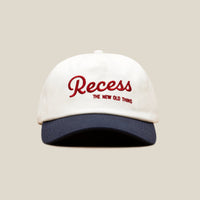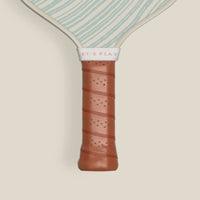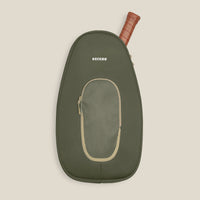Pickleball Line Rules: How to Judge In or Out
When it comes to pickleball, understanding line rules can make all the difference in your game. Whether you’re hitting the courts for the first time or prepping for a tournament, knowing the ins and outs of pickleball line rules will help you play confidently and fairly. This guide will walk you through each important detail, from basic line definitions to the rules on making line calls, handling disputes, and the specific rules that apply to serves. Let’s break it down and ensure you’re prepared to make the right call on the court!
The Basics of Pickleball Lines
The layout of a pickleball court is simple but important. Each line serves a purpose, marking boundaries and playing zones that impact how you approach each shot. Here’s a quick rundown of the key pickleball lines:
- Baseline – Located at the back of the court, this line marks the outer edge for serves and rallies.
- Sidelines – These lines run the length of the court, setting boundaries on either side.
- Non-Volley Zone Line (or Kitchen Line) – Positioned seven feet from the net, this line marks the boundary of the non-volley zone, also known as the kitchen.
- Centerline – This line runs down the middle of the service courts, dividing them and acting as a guide for service placement.
So, is the line in or out in pickleball? According to the rules, any ball that touches any part of a line is considered “in.” This applies to all lines, including the baseline, sideline, and centerline. However, when serving, a ball that lands on the kitchen line is “out” because the serve cannot land in the kitchen.
For a deeper dive into the court setup, check out our detailed blog on Pickleball Court Dimensions to see how every inch of space is laid out to enhance your game.
Pickleball Line Rules on Serve
Serving is where precision matters most, and pickleball line rules on serve are particularly important. Here’s what you need to know to keep your serve within the rules:
- Diagonal Aim: Your serve should travel diagonally across the net, aiming to land within your opponent’s service court. It’s okay if the pickleball ball grazes the centerline as long as it lands within the sideline and baseline boundaries.
- Avoiding the Kitchen Line: If your serve lands in the kitchen or touches the kitchen line, it’s automatically a fault. This rule keeps the kitchen off-limits for serving, adding a level of challenge and control to your shot.
- Stance and Position: Make sure both feet stay behind the baseline until after the ball is served. Crossing this line during the serve is a foot fault, which gives your opponent the point.
Mastering your serve takes practice, but once you’re consistent with these rules, you’ll find it becomes second nature. And with the right paddle, you’ll be able to deliver powerful serves. Browse our selection of pickleball paddles to see which option works best for you.
Out of Bounds Rules in Pickleball
In pickleball, calls about what’s “in” or “out” can happen quickly. Knowing the pickleball out of bounds rules can help you make confident calls and avoid giving away points. Here’s a quick guide:
- Lines Are “In”: As we’ve covered, if any part of the ball touches a line, it’s “in.” This means players need to watch closely, especially on shots near the baseline or sideline.
- Non-Volley Zone (or Kitchen): When volleying, the kitchen line plays an important role. If you’re volleying, you can’t step into the kitchen unless the ball bounces in the kitchen itself. If it does, you can step into the kitchen to hit that one shot, but you must exit the area before the next shot is returned.
These pickleball out of bounds rules are straightforward but critical for fair play. Playing close to the lines can give you an advantage, so learning to judge these calls accurately is worth the effort.
Who Can Make the Call?
In pickleball, players are responsible for calling balls on their side of the court. Here’s a breakdown of who makes the call and common practices:
- Player-Made Calls: In casual games, players are usually responsible for making their own calls. This approach relies on honesty, so it’s key to stay fair-minded and respectful. If you see the ball hit a line, even just slightly, it’s “in.”
- Line Judges and Referees: In tournaments or competitive play, line judges and referees are often present to make calls on key shots. They focus on crucial boundaries like the centerline for serves and the kitchen line for volleys, ensuring everything’s by the book.
When playing casually, a spirit of sportsmanship goes a long way. Treating every line call fairly – even when the game gets intense – keeps the game fun for everyone.
Resolving Disputes on Line Calls
We’ve all been there: a shot lands close to the line, and you and your opponent can’t agree if it was in or out. Fortunately, there are ways to handle disputes without disrupting the game:
- Replay the Point: One of the easiest ways to settle a dispute is to replay the point. This option keeps the game moving and keeps the focus on having fun.
- Use Technology When Available: For some official matches, technology like video replays or tracking devices are used to confirm line calls. While this isn’t available in casual play, it’s an emerging option in the competitive circuit.
- Communicate Openly: Sometimes, a quick conversation can clear things up. Checking with your opponent or suggesting a do-over often works, especially if the call was truly a close one.
Friendly, open communication can prevent disputes from getting heated. Pickleball’s competitive, sure, but it’s also about community and enjoyment.
Mastering Line Rules for a Winning Strategy
Understanding pickleball line rules does more than keep you in line – it gives you an edge on the court. Knowing when to call a ball “in” or “out” helps you stay consistent, accurate, and confident during every point. Mastering the rules also ensures a smoother, more enjoyable game, whether you’re practicing or playing in a tournament.
So next time you’re on the court, remember these line rules, stay fair-minded, and enjoy the game! And don’t forget to check out our pickleball paddles, clothing, and gear to ensure you’re fully equipped for all the action. With the right paddle, some knowledge of the rules, and a love of the game, you’ll be prepared for anything that comes your way on the court!










